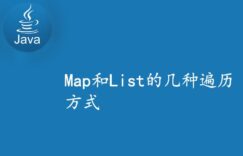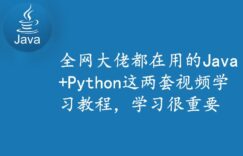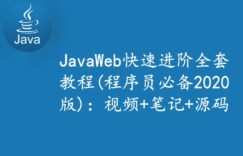日韩电影网提供最新最快高清的电影、最新电视剧和新番动漫,免费在线观看科幻片、动作片、 悬疑片、爱情片、恐怖片等视频内容,更多高清电影免费在线观看尽在日韩电影网,欢迎收藏!
阿里 P8 级资深架构师吐血总结的一份 Java 核心知识.pdf, 内容覆盖很广,Java 核心基础、Java 多线程、高并发、Spring、微服务、Netty 与 RPC、Zookeeper、Kafka、RabbitMQ、Habase、设计模式、负载均衡、分布式缓存、Hadoop、Spark、Storm、云计算等。
获取方式:【 关注 + 转发 】后,【 私信 】我,回复关键字【 资源 】,即可免费无套路获取哦~
以下是资源的部分目录以及内容截图:
重要的事再说一遍,获取方式:【 关注 + 转发 】后,【 私信 】我,回复关键字【 资源 】,即可免费无套路获取哦~
开始正文,Show Time !!!
大家好,后续会间断地奉上一些 Spring Boot 2.x 相关的博文,包括 Spring Boot 2.x 教程和 Spring Boot 2.x 新特性教程相关,如 WebFlux 等。还有自定义 Starter 组件的进阶教程,比如:如何封装一个自定义图床 Starter 启动器(支持上传到服务器内部,阿里 OSS 和七牛云等), 仅仅需要配置相关参数,就可以将图片上传功能集成到现有的项目中。
好吧,这些都是后话。今天主要来讲讲如何在 Spring Boot 2.x 版本中集成发送邮件功能。
可以说,邮件发送在企业级应用中是比较常见的服务了,如运维报警,用户激活,广告推广等场景,均会使用到它。废话少说,开干!
目录
一、添加依赖
二、添加邮件相关配置
三、关于授权码
- 3.1 什么是 QQ 邮箱授权码
- 3.2 如何获取
四、开始编码
- 4.1 定义功能类
- 4.2 项目结构
- 4.3 单元测试,验证效果
五、总结
一、添加依赖
在 pom.xml 文件中添加 spring-boot-starter-mail 依赖:
<dependency> <groupId>org.springframework.boot</groupId> <artifactId>spring-boot-starter-mail</artifactId> </dependency>
二、添加邮件相关配置
在 application.properties 配置文件中添加下面内容:
# 发送邮件的服务器,笔者这里使用的 QQ 邮件
spring.mail.host=smtp.qq.com
spring.mail.username=你的邮箱 地址
spring.mail.password=授权码,或邮箱密码
spring.mail.properties.mail.smtp.auth=true
spring.mail.properties.mail.smtp.starttls.enable=true
spring.mail.properties.mail.smtp.starttls.required=true
yml 格式的配置文件,添加如下:
spring: mail: host: smtp.qq.com #发送邮件的服务器,笔者这里使用的 QQ 邮件 username: 你的邮箱地址 password: 授权码,或邮箱密码 properties.mail.smtp.auth: true properties.mail.smtp.starttls.enable: true default-encoding: utf-8
三、关于授权码
对于上面的配置,您肯定对密码配置那块还抱有疑问,如果您使用的是 163 邮箱,或者 Gmail 邮箱,直接使用密码就可以了,如果您使用的是 QQ 邮箱,则需要先获取授权码。
3.1 什么是 QQ 邮箱授权码
下图截自 QQ 邮箱官方文档:
3.2 如何获取
登录 QQ 邮箱:
点击设置:
跳转页面后, 点击账户,将页面往下拖动 ,您会看到:
验证成功过后,即可获取授权码:
四、开始编码
4.1 定义功能类
先定义一个邮件服务的接口类, Mail service .java:
package site. exception .springbootmail.service; /** * * @site 个人网站: www.exception.site * @date 2019/4/10 * @time 下午4:19 * @discription **/public interface MailService { /** * 发送简单文本的邮件 * @param to * @param subject * @param content * @return */ boolean send(String to, String subject, String content); /** * 发送 html 的邮件 * @param to * @param subject * @param html * @return */ boolean sendWithHtml(String to, String subject, String html); /** * 发送带有图片的 html 的邮件 * @param to * @param subject * @param Html * @param cids * @param filePaths * @return */ boolean sendWithImageHtml(String to, String subject, String html, String[] cids, String[] filePaths); /** * 发送带有附件的邮件 * @param to * @param subject * @param content * @param filePaths * @return */ boolean sendWithWithEnclosure(String to, String subject, String content, String[] filePaths); }
接口内定义了四个方法:
- send(): 发送简单文本的邮件;
- sendWithHtml(): 发送 html 的邮件;
- sendWithImageHtml(): 发送带有图片的 html 的邮件;
- sendWithWithEnclosure: 发送带有附件的邮件;
完成接口的定义以后,我们再定义一个具体实现类, MailServiceImpl.java:
package site.exception.springbootmail.service.impl; import org. slf4j .Logger; import org.slf4j.LoggerFactory; import org.springframework.beans.factory.annotation.Autowired; import org.springframework.boot.autoconfigure.mail.MailProperties; import org.springframework.core.io.FileSystemResource; import org.springframework.mail.SimpleMailMessage; import org.springframework.mail.javamail.JavaMailSender; import org.springframework.mail.javamail.MimeMessageHelper; import org.springframework.stereotype.Service; import org.springframework.util.Assert; import site.exception.springbootmail.service.MailService; import javax.mail.internet.MimeMessage; /** * * @site 个人网站: www.exception.site * @date 2019/4/10 * @time 下午4:19 * @discription **/@Service public class MailServiceImpl implements MailService { private final static Logger logger = LoggerFactory.getLogger(MailServiceImpl.class); @Autowired private MailProperties mailProperties; @Autowired private JavaMailSender javaMailSender; /** * 发送简单文本的邮件 * @param to * @param subject * @param content * @return */ @ Override public boolean send(String to, String subject, String content) { logger.info("## Ready to send mail ..."); SimpleMailMessage simpleMailMessage = new SimpleMailMessage(); // 邮件发送来源 simpleMailMessage.setFrom(mailProperties.getUsername()); // 邮件发送目标 simpleMailMessage.setTo(to); // 设置标题 simpleMailMessage.setSubject(subject); // 设置内容 simpleMailMessage.setText(content); try { // 发送 javaMailSender.send(simpleMailMessage); logger.info("## Send the mail success ..."); } catch (Exception e) { logger.error("Send mail error: ", e); return false; } return true; } /** * 发送 html 的邮件 * @param to * @param subject * @param html * @return */ @Override public boolean sendWithHtml(String to, String subject, String html) { logger.info("## Ready to send mail ..."); MimeMessage mimeMessage = javaMailSender.createMimeMessage(); MimeMessageHelper mimeMessageHelper = null; try { mimeMessageHelper = new MimeMessageHelper(mimeMessage, true); // 邮件发送来源 mimeMessageHelper.setFrom(mailProperties.getUsername()); // 邮件发送目标 mimeMessageHelper.setTo(to); // 设置标题 mimeMessageHelper.setSubject(subject); // 设置内容,并设置内容 html 格式为 true mimeMessageHelper.setText(html, true); javaMailSender.send(mimeMessage); logger.info("## Send the mail with html success ..."); } catch (Exception e) { e.printStackTrace(); logger.error("Send html mail error: ", e); return false; } return true; } /** * 发送带有图片的 html 的邮件 * @param to * @param subject * @param html * @param cids * @param filePaths * @return */ @Override public boolean sendWithImageHtml(String to, String subject, String html, String[] cids, String[] filePaths) { logger.info("## Ready to send mail ..."); MimeMessage mimeMessage = javaMailSender.createMimeMessage(); MimeMessageHelper mimeMessageHelper = null; try { mimeMessageHelper = new MimeMessageHelper(mimeMessage, true); // 邮件发送来源 mimeMessageHelper.setFrom(mailProperties.getUsername()); // 邮件发送目标 mimeMessageHelper.setTo(to); // 设置标题 mimeMessageHelper.setSubject(subject); // 设置内容,并设置内容 html 格式为 true mimeMessageHelper.setText(html, true); // 设置 html 中内联的图片 for (int i = 0; i < cids.length; i++) { FileSystemResource file = new FileSystemResource(filePaths[i]); // addInline() 方法 cid 需要 html 中的 cid (Content ID) 对应,才能设置图片成功, // 具体可以参见,下面 4.3.3 单元测试的参数设置 mimeMessageHelper.addInline(cids[i], file); } javaMailSender.send(mimeMessage); logger.info("## Send the mail with image success ..."); } catch (Exception e) { e.printStackTrace(); logger.error("Send html mail error: ", e); return false; } return true; } /** * 发送带有附件的邮件 * @param to * @param subject * @param content * @param filePaths * @return */ @Override public boolean sendWithWithEnclosure(String to, String subject, String content, String[] filePaths) { logger.info("## Ready to send mail ..."); MimeMessage mimeMessage = javaMailSender.createMimeMessage(); MimeMessageHelper mimeMessageHelper = null; try { mimeMessageHelper = new MimeMessageHelper(mimeMessage, true); // 邮件发送来源 mimeMessageHelper.setFrom(mailProperties.getUsername()); // 邮件发送目标 mimeMessageHelper.setTo(to); // 设置标题 mimeMessageHelper.setSubject(subject); // 设置内容 mimeMessageHelper.setText(content); // 添加附件 for (int i = 0; i < filePaths.length; i++) { FileSystemResource file = new FileSystemResource(filePaths[i]); String attachementFileName = "附件" + (i + 1); mimeMessageHelper.addAttachment(attachementFileName, file); } javaMailSender.send(mimeMessage); logger.info("## Send the mail with enclosure success ..."); } catch (Exception e) { logger.error("Send html mail error: ", e); return false; } return true; } }
4.2 项目结构
完成上面功能类的编码后,看下项目结构如下:
4.3 单元测试,验证效果
4.3.1 简单文本发送
填写相关测试参数,包括目标邮箱地址,标题,内容,运行单元测试:
单元测试通过,再看下实际效果:
邮件正常发送。
4.3.2 发送 Html
填写相关测试参数,包括目标邮箱地址,标题,html 内容,运行单元测试通过,直接看效果:
可以看到,邮件发送成功!
4.3.3 发送带有图片的 Html
填写相关测试参数,包括目标邮箱地址,标题,html 内容,html 中包含了两张图片,并且 src中的内容是 cid:{flag}的格式,前缀 cid:是固定的,您需要改变是后面的标志位,通过 addInline(cid,file) 来将 cid 和具体的图片文件对应起来。
运行单元测试通过,看看效果如何:
可以看到 html 中图片也是 OK 的。
4.3.4 发送带有附件的邮件
填写相关测试参数,包括目标邮箱地址,标题,内容,并添加了两个附件,运行单元测试,看看实际效果:
发送成功,到此所有的单元测试全部运行通过。
五、总结
本文中,我们学习如何在 Spring Boot 2.x 版本中集成发送邮件功能,包括发送简单文本,Html 内容,带有图片的 Html 内容,以及带有的附加的邮件,希望对您有所帮助!


